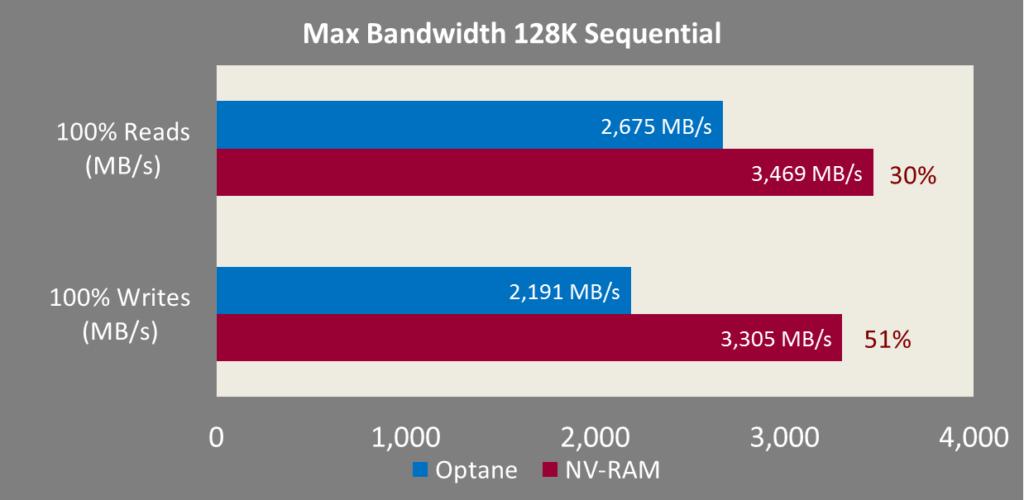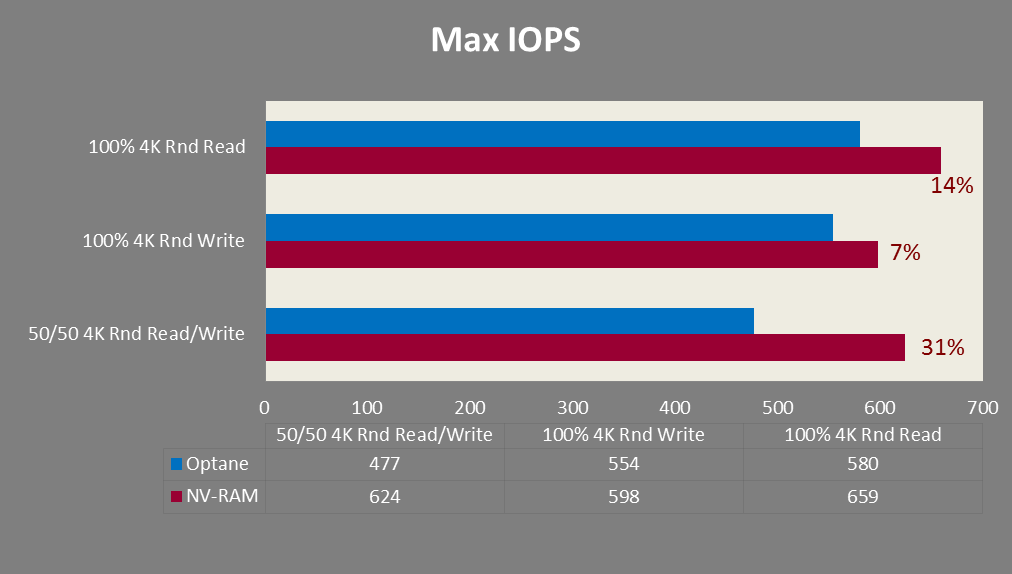NV-RAM on NVMe
Post 1
NV-RAM vs. 3D XPoint
This is the first in a series of posts analyzing the performance of NV-RAM on NVMe. Even if an NV-RAM NVMe product is not directly relevant to your application, the topic may still be of interest as this NV-RAM drive exclusively utilizes DDR4 memory for all data accesses, providing a helpful comparison barometer for other NVMe devices potentially utilizing other types of memory. As such, this first post evaluates NV-RAM on NVMe in context of 3D X-Point™ on NVMe (aka Optane™).
It’s also noteworthy that every Radian Flash NVMe SSD includes, in addition to its terabytes of Flash, 2GB to 12GB of the same type of User controlled NVMe NV-RAM that is being benchmarked here, and is available under what is now being termed a Persistent Memory Region (PMR).
Radian began development of its NV-RAM technology back in 2011, about a year after the company was founded. Since then, we’ve shipped thousands of NVMe storage drives to the industry’s largest storage OEMs. The company’s latest dual port, hot swap NV-RAM technology can be found in a U.2 format in the VT-PM 8 and VT-PM 16 persistent memory drives from Viking Technology® (a division of Sanmina®).
Testing
We compare performance between the Radian/Viking VT-PM 8GB U.2 drive and the data center class Intel® Optane DC P4800X 375GB U.2 drive. While the VT-PM 8GB supports single port x4 mode, or dual port 2×2 mode, the Optane was only available in single port x4 mode. For consistency, all testing of both drives presented here was performed in single port x4 mode.
We utilized the industry standard fio tester and a Linux 4.14 kernel on an x86 platform. The details of the hardware platform and configuration can be found here. In all tests, unless otherwise noted, we utilize two worker threads. Device level I/O queue depth (IOD) varies throughout tests, is noted where relevant, and is the product of two worker threads: e.g., IOD 32 (2×16) means a device level queue depth of 32, where 2 equals the number of worker threads and 16 equals the queue depth of the individual worker thread.
Write-Ahead Logging/Caching
As you might expect, some of the more common applications for the Radian/Viking NV-RAM drive involve write-ahead logging and write caching. These workloads typically involve 100% writes, usually in a 4K random pattern, and this pattern therefore composes the majority of our test workloads.
Max Bandwidth To obtain maximum bandwidth, the drives were tested at a range of IODs up to IOD 128 (2×64), which is what yielded the highest bandwidth and is presented here. The NV-RAM drive provides 30% more bandwidth than Optane for 100% large sequential Reads. The Optane drive performs fairly well in this metric, but this is an easy target for any solid state device, and in fact the Optane numbers in this test case aren’t much better than a good Flash SSD. The gap between Optane and the NV-RAM drive is greater with 100% large sequential Writes, with the NV-RAM drive providing 51% higher max bandwidth.
To obtain maximum bandwidth, the drives were tested at a range of IODs up to IOD 128 (2×64), which is what yielded the highest bandwidth and is presented here. The NV-RAM drive provides 30% more bandwidth than Optane for 100% large sequential Reads. The Optane drive performs fairly well in this metric, but this is an easy target for any solid state device, and in fact the Optane numbers in this test case aren’t much better than a good Flash SSD. The gap between Optane and the NV-RAM drive is greater with 100% large sequential Writes, with the NV-RAM drive providing 51% higher max bandwidth.
Max IOPS
To reach maximum IOPS, drives were tested at a range of IODs up to IOD 128 (2×64), which again yielded the highest numbers and are presented here. Max IOPS is the area where we found Optane most impressive. While 100% random Read IOPS are not particularly challenging for any solid state device, Optane does very well in the more difficult 100% 4K random Write test, and is respectable in the 50% 4K Random Read/50% 4K Random Write pattern test. Specifically, the NV-RAM drive beats Optane by 14% on Max Random Read IOPS, 7% on Max Random Write IOPS, and 31% on Max 4K Mixed Read/Write IOPS.
NV-RAM on NVMe Post 1
Page 1 of 3

